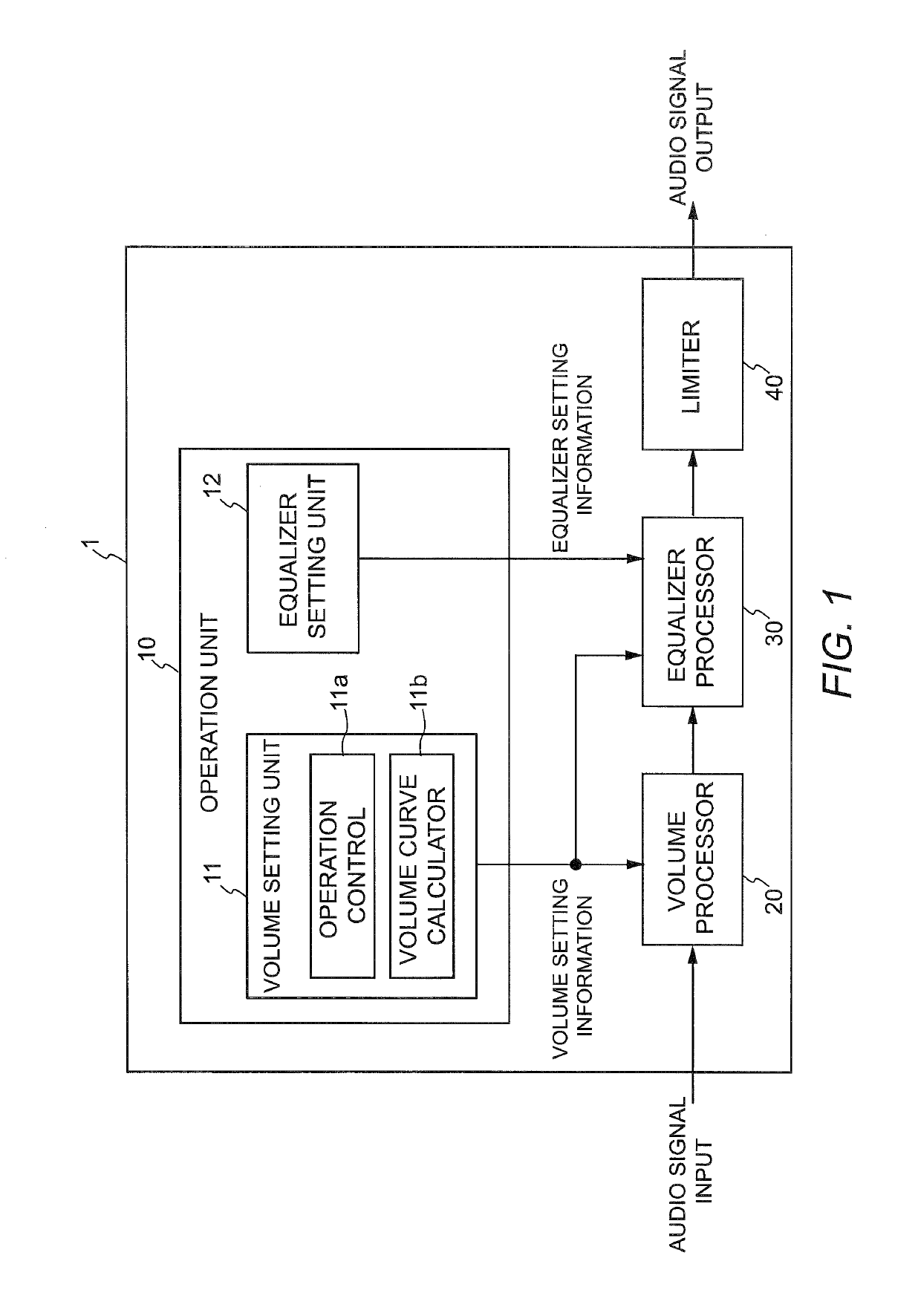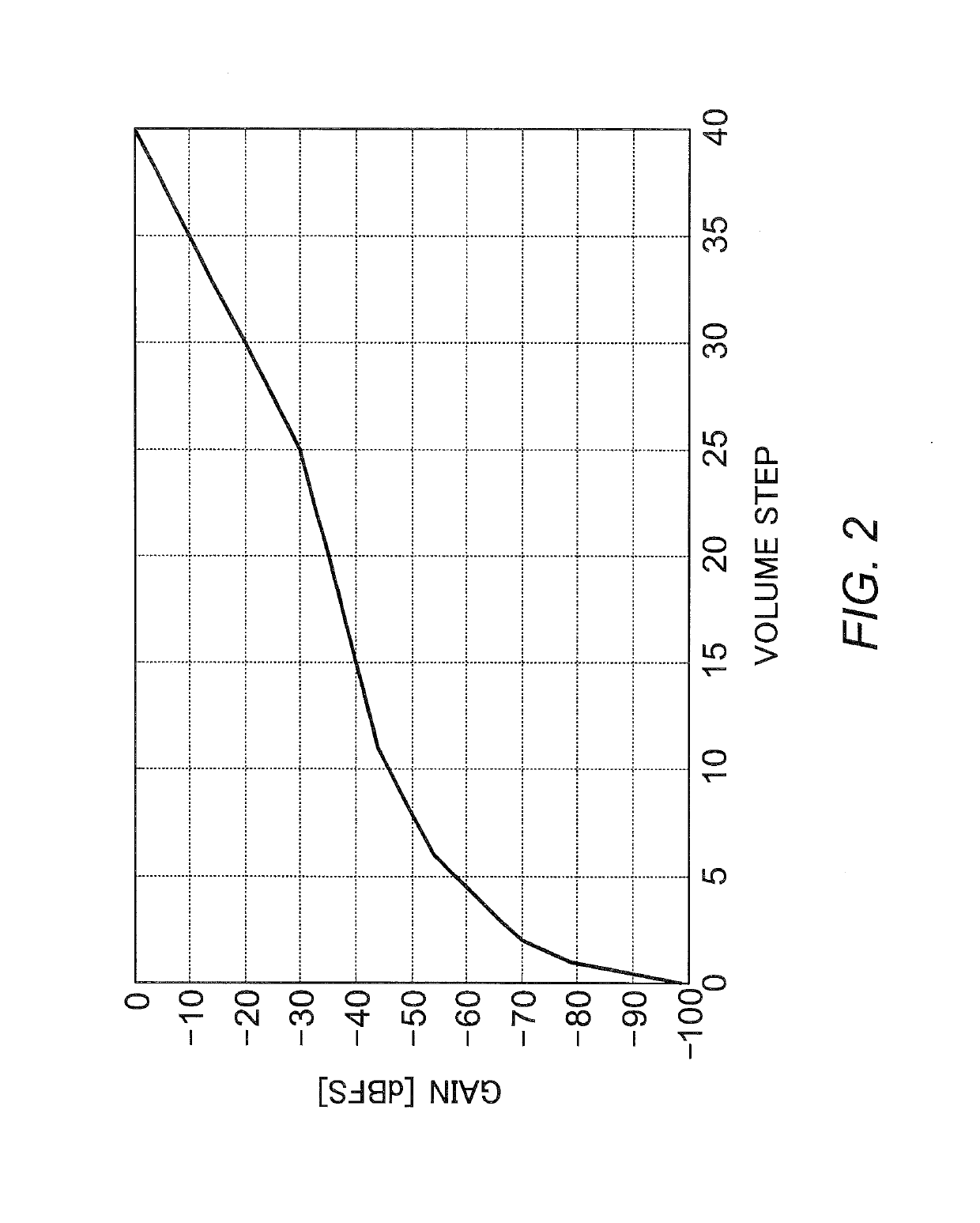Audio processor and audio processing method
- Summary
- Abstract
- Description
- Claims
- Application Information
AI Technical Summary
Benefits of technology
Problems solved by technology
Method used
Image
Examples
Embodiment Construction
[0052]Now, an audio processor according to one embodiment of the present invention will be described in detail using an audio processor having a schematic configuration shown in FIG. 1. As shown in FIG. 1, an audio processor 1 includes an operation unit 10, a volume processor 20, an equalizer processor 30, and a limiter 40. An audio signal inputted to the audio processor 1 is processed by the volume processor 20 and equalizer processor 30 and then the level of the audio signal is limited by the limiter 40. The audio signal outputted from the limiter 40 is amplified by an amplifier (not shown) and then outputted from a speaker (not shown).
[0053][Operation Unit]
[0054]The operation unit 10 includes a volume setting unit 11 that the user operates to adjust (set) the volume and an equalizer setting unit (band gain setting unit) 12 that the user operates to adjust the gains for respective bands.
[0055][Volume Setting Unit]
[0056]The volume setting unit 11 includes a rotatable operation cont...
PUM
 Login to View More
Login to View More Abstract
Description
Claims
Application Information
 Login to View More
Login to View More - R&D
- Intellectual Property
- Life Sciences
- Materials
- Tech Scout
- Unparalleled Data Quality
- Higher Quality Content
- 60% Fewer Hallucinations
Browse by: Latest US Patents, China's latest patents, Technical Efficacy Thesaurus, Application Domain, Technology Topic, Popular Technical Reports.
© 2025 PatSnap. All rights reserved.Legal|Privacy policy|Modern Slavery Act Transparency Statement|Sitemap|About US| Contact US: help@patsnap.com



